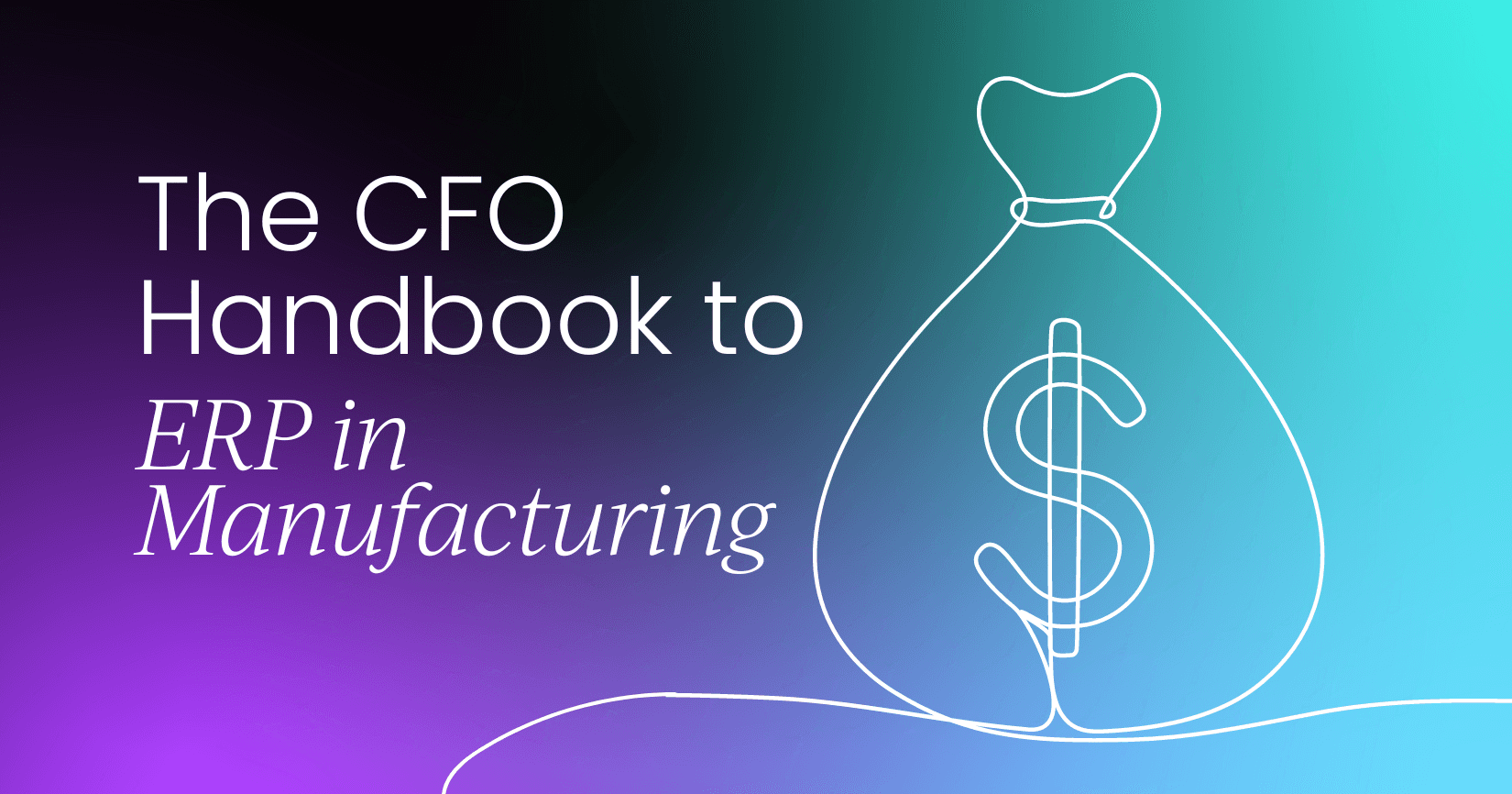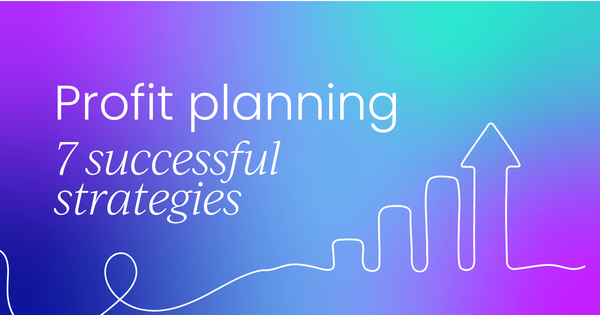The hard truth is that most businesses aren’t profit planning properly or nearly enough. Many are stuck in their old ways using outdated strategies, overlooking critical factors, or worse, flying by the seat of their pants with no real plan at all.
But here’s the good news: effective profit planning isn't rocket science. It's a skill that can be learned, honed, and mastered.
So, here’s why most businesses fail at profit planning and seven secrets of the trade to help you transform your approach and supercharge your bottom line.👇
Topics covered:
- The definition of profit planning
- What's the difference between cash planning and profit planning
- Budget planning vs profit planning
- Why planning for profits is so important
- Common pitfalls
- How to create a profit plan (in seven steps)
What is profit planning?
Profit planning is exactly what it sounds like: planning for profit.
It’s a process where companies outline their expected revenues, expenses, and profits for a specific period, usually over a year.
To build a solid profit plan, you'll need to set targets for sales, costs, and expenses. It's also smart to consider different scenarios, like what might happen if things go really well or really bad.
Your main goal is to create a strategy that helps you (or your company) reach its desired profit levels. This means aligning your sales goals, pricing, cost-cutting efforts, and investment decisions.
Cash planning vs profit planning
Cash planning is about managing liquidity, while profit planning is about achieving profitability.
Cash planning ensures there is enough cash on hand for a company to meet short-term obligations and it deals with the timing of cash inflows and outflows to maintain adequate liquidity.
Profit planning, on the other hand, is centered around forecasting and strategizing to achieve a certain level of profit. It focuses more on setting targets for revenue and managing costs to make sure the business is profitable over time.
Budget planning vs profit planning
The main difference between budget planning and profit planning is that budget planning focuses on managing expenses and allocating resources to ensure financial stability, while profit planning concentrates on setting and achieving targets for revenue growth and profitability to drive the company’s financial success.

Why is profit planning so important?
Now, you might wonder why all this planning is necessary. Can’t we just set a sales target and hope for the best? Well, not quite.
Profit planning is important because it gives you a clear direction. It keeps you on track, helps you set achievable goals, and shows you where potential roadblocks might lie.
Let's consider a fictional example to help illustrate this better…
Imagine you’re running a mid-sized tech company. Without a profit plan, you might be throwing money at different projects, hoping something sticks. But with a profit plan, you can make smarter choices about where to invest your resources.
For example, you might focus on your most successful product or cut costs in areas that aren't making much money. A profit plan helps you make decisions based on facts, not just gut feelings.
Where do companies go wrong?
It’s not always easy to carry out profit planning in such a way that guarantees excellent results. Businesses often dive into some of these common pitfalls:
Short-term focus
Many businesses fall into the trap of prioritizing immediate gains over long-term sustainability. They chase quick profits at the expense of building a solid foundation for future growth.
Overly optimistic projections
There’s nothing wrong with being optimistic. However, a positive outlook can lead to issues when you start setting overly optimistic sales and revenue projections.
When projections are too high, companies may overestimate their revenues and underestimate the resources needed to achieve those targets. Companies might overspend on resources they don't need, struggle with cash flow, and ultimately fall short of their profit goals.
Failing to consider all costs
Another big mistake in profit planning is failing to account for all potential costs. Many businesses focus primarily on fixed costs (like rent and salaries) and variable costs (like materials and production expenses) but overlook other expenses. And, as you can probably guess, unexpected costs can quickly eat into profits.

Neglecting cash flow
Businesses often forget to factor in the timing of payments and expenses, leading to cash flow crunches even when the books show a profit.
For example, if your company sells a product on credit with a 30-day payment term, you'll recognize the revenue when the sale is made. However, the cash won't come in until the customer pays. If you have significant expenses due before the payment is received, you might face a cash flow crunch, even if your business is profitable overall.
Ignoring market dynamics
Relying solely on past performance can be a risky strategy. Businesses need to be adaptable to changes in the market, such as shifts in consumer tastes, new technologies, and increased competition. Failing to adjust your profit plan to these changes can put your business at a disadvantage.
Lack of clear objectives
Many businesses jump into profit planning without first setting clear, specific objectives or ensuring that their plan aligns with the overall business strategy. This is a problem, because without a clear goal, your profit plan will lack direction. Profit goals should be defined early on so that you can measure progress and adjust the course of the plan if needed.
Underestimating the importance of data
Data is the backbone of effective profit planning. However, many businesses either lack access to quality data or fail to use it properly, leading to inaccurate forecasts and poor decision-making.
Poor communication and lack of buy-in
Profit planning often fails because it is done in isolation by the finance team, with little input from other departments. This lack of communication can result in a plan that doesn’t have buy-in from key stakeholders. If this happens, you’re more likely to see misunderstandings emerge along with misaligned goals and even resistance to change.

7 steps to create a profit plan: Secrets for success
Creating a successful profit plan involves more than just setting sales targets and hoping for the best. If you want to create the best possible profit plan for your business, you’ll need to take a structured approach.
So, here are seven steps and secrets for profit planning success to help you maximize your business’s profitability.
Step 1: Set clear objectives and SMART goals
Begin by defining what you want to accomplish. Your objectives should be clear and align with your overall business strategy. To make your goals actionable, try following the SMART framework:
- Specific: Clearly define what you want to achieve (e.g., "Increase net profit by 15%").
- Measurable: Set quantifiable targets that can be tracked (e.g., "Increase sales revenue by 20%").
- Achievable: Ensure your goals are realistic and attainable given your resources and circumstances.
- Relevant: Make sure your goals align with your business's overall direction and priorities.
- Time-bound: Set deadlines to create a sense of urgency and accountability.
Example: Instead of a vague goal like "Increase profits," set a specific, measurable, and time-bound goal like "Increase net profit margin by 5% by the end of the year."
Step 2: Analyze your current financial situation
Take a deep dive into your current financial statements to understand where you stand. Analyze your revenue streams, cost structures, and profit margins. Doing this will help you identify strengths, weaknesses, and opportunities – serving as a baseline for your profit planning.
Make sure to leverage historical data, market trends, and financial metrics to inform your planning. Understanding past performance will help you make accurate forecasts and set realistic goals.
Step 3: Forecast sales and revenues
Based on your analysis, project your future income by forecasting sales and revenue for the planning period. Consider factors like market demand, economic conditions, and competition.
To help prepare for the unexpected, develop multiple scenarios (best case, worst case, and most likely) to prepare for different market conditions. This approach ensures you’re not caught off guard by unexpected changes and can adapt quickly if needed.
Step 4: Identify costs and plan for expenses
Identify all potential costs and expenses, including fixed costs (such as rent and salaries) and variable costs (like materials and production). It’s also worth considering indirect costs like marketing, maintenance, and unforeseen expenses.
Remember, higher revenue doesn't always mean higher profits. So, pay close attention to cost management and aim to optimize your profit margins. Identify your most profitable products or services and focus on maximizing their returns.
Step 5: Align profit plan with operational plans
Ensure your profit plan aligns with your operational plans. This means coordinating with departments like marketing, sales, production, and HR to ensure everyone is working towards the same profitability goals.
A key step here is to involve key stakeholders from different departments in the profit planning process. This creates a shared sense of ownership and helps to build a collaborative approach to achieving profit goals.
Step 6: Monitor performance and adjust regularly
Profit planning is not a one-time exercise. It requires ongoing monitoring and adjustments to stay aligned with market conditions and business performance.
If you want to keep track, it’s a good idea to set up a regular review process (monthly or quarterly) to compare actual performance against the profit plan. From there, you can adjust your strategies based on these insights to stay on track.
Step 7: Invest in continuous improvement and innovation
Identify opportunities for innovation and continuous improvement. This might involve developing new products, optimizing processes, or adopting new technologies that can boost profitability.
Create a dedicated innovation team to identify and develop new ideas. This team can brainstorm, prototype, and implement new initiatives. They can also coordinate with other departments to ensure that new ideas align with your overall business strategy.
By continuously improving and embracing innovation, you'll stay competitive and achieve your profit goals.




 Follow us on LinkedIn
Follow us on LinkedIn




